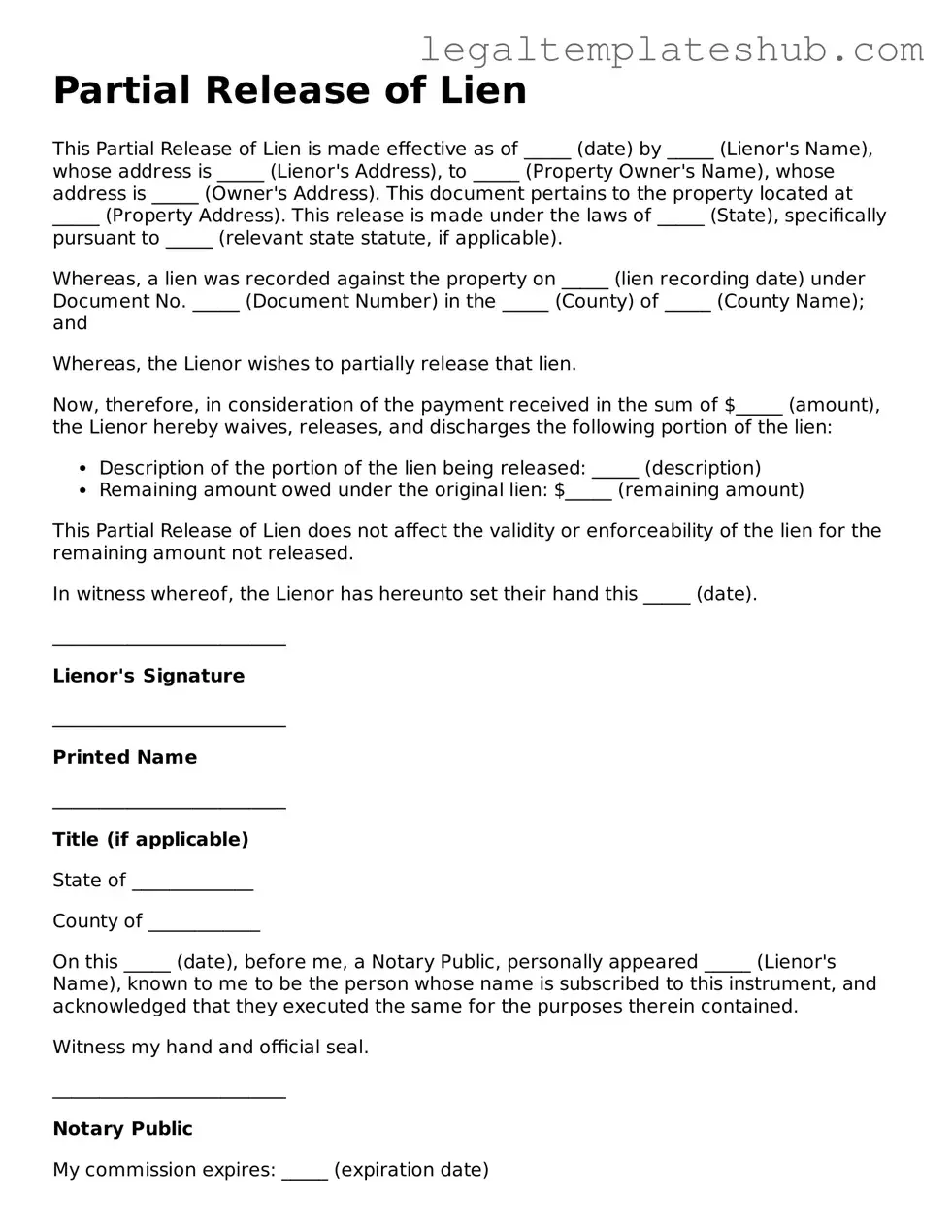Printable Partial Release of Lien Template
The Partial Release of Lien form is a legal document that allows a property owner to release a portion of a lien on their property, often after a payment has been made. This form is essential for ensuring that contractors and subcontractors are compensated for their work while also protecting the property owner's rights. To learn more and take action, fill out the form by clicking the button below.
Access Editor
